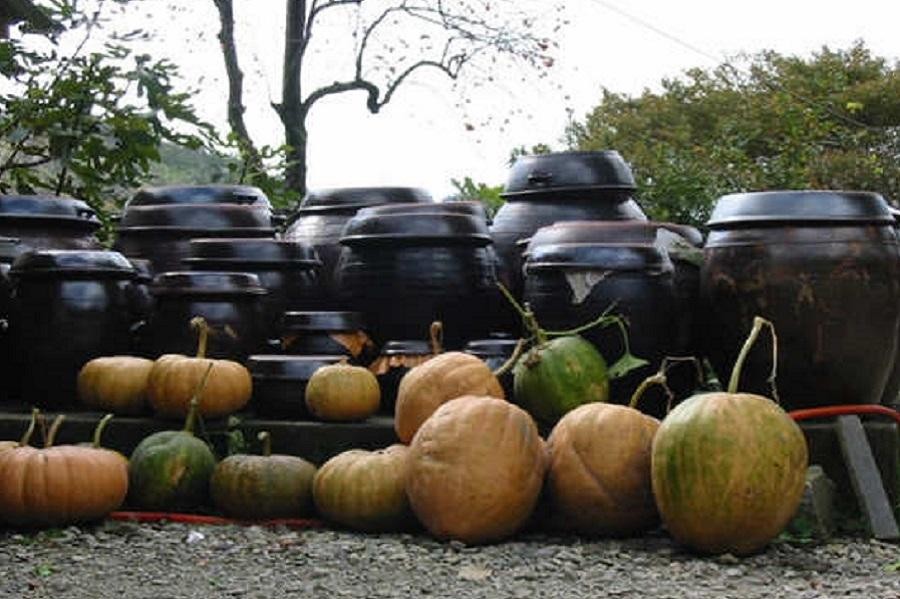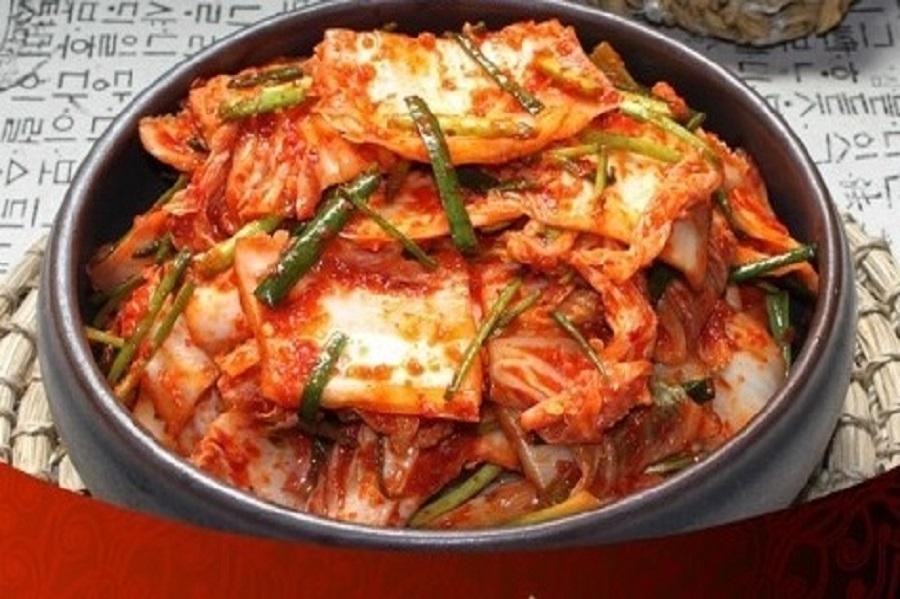Food
Food
Kimchi
Kimchi Although kimchi, Korea’s signature dish, can be found almost everywhere in the world, the most authentic varieties are surely still in Korea. Kimchi is a must in a Korean meal, so much so that no restaurant in Korea will charge extra for it.
There are over 200 variations of kimchi today, with both regional and seasonal variations determining which ingredients will be used. The dish is made by mixing together Korean cabbage, radish, pumpkin, onion, and other vegetables with chili powder, crushed garlic and salted seafood, which is then left to ferment. The measure of well-made kimchi is the crispness of the cabbage leaves and its taste.
Bibimbap
Bibimbap(Rice Mixed with Vegetables and Beef)Bibimbap is one of Korea’s most wellknown dishes. It is a dish that is very much in line with the overall Korean food philosophy, as it is both delicious and nutritious. Depending on the ingredients used, bibimbap can be a meat-based or vegetarian dish. Regions throughout the Korean Peninsula have their own unique versions of bibimbap, but the most famous is the one from Jeonju-si in Jeollabukdo. The dish has changed over the years – most notably with today’s practice of using chili paste instead of soy sauce as in ancient times –likely in order to better savor the taste of each individual ingredient.
Bulgogi / Galbi
.Koreans love meat – so much so that it was even written in ancient Chinese history books that “Koreans enjoy grilling meat.” At one point in the Joseon Dynasty, Koreans were eating so much meat that there were not enough cows around to work the fields, and it became prohibited to kill cows used for farming.
Traditionally, meat was – and still is – marinated in a sweet soy sauce-based marinade before grilling, but since the 1980’s, lightly salted grilled beef has also become quite popular.
Samgyetang (Ginseng Chicken Soup)
There is a strong belief in Korea that the body’s energy must be replenished during the hot months of summer. Therefore when the heat of summer is at its peak, many people will eat samgyetang, or chicken ginseng soup. Samgyetang is made by stuffing a small hen with ginseng, glutinous rice, garlic, jujubes and chestnuts then slow-cooking the ingredients until the meat is tender. The resulting broth alone, slightly bitter in taste, is considered efficacious and good for rejuvenating tired bodies. Some samgyetang restaurants in Seoul also serve diners a shot of insamju (ginseng liquor), before bringing the chicken, as it is believed that a small amount of alcohol in advance actually helps the body absorb all the nutrients from the food.
Yangnyeom Chicken (Spicy Fried Chicken)
Yangnyeom chicken is a uniquely Korean take on American-fried chicken, which was first introduced into the country after the Korean War and extremely popular by the 1980s. By the following decade, Korean restaurateurs began experimenting with their own versions of the dish, coating the chicken with a sweet and spicy sauce, and yangnyeom chicken was born. Since then, further variations have appeared, with soy sauce chicken being a key example. Yangnyeom is now a popular late-night snack and typically served with beer. Chi-maek, meaning ‘chicken and maekju (beer)’, is a common slang used by young adults.
Samgyeopsal (Grilled Pork Belly)
Samgyeopsal is a cut of pork belly meat whose name literally translates to ‘three-layered meat’. Although two to three times more expensive than other pork cuts,Koreans love samgyeopsal and the demand for it is so high that it is even imported from countries such as Denmark and France. Chunky slices of samgyeopsal are typically char-grilled or cooked in a pan, then wrapped in lettuce or sesame leaf with garlic and ssamjang (soybean dipping sauce), although restaurants often also specialize in their own unique dipping sauces. However, the best accompaniment to samgyeopsal is none other than Korea's famous alcohol, soju.
Makgeolli (Traditional Korean Rice Liquo
Makgeolli is a traditional malt liquor, and when strained to a refined clear liquor becomes cheongju (literally ‘clear liquor’), or Korean sake.
Makgeolli made for export needs to be sterilized, however as the process destroys amino acids and bacteria actually considered good for one’s health, the reader is advised to try the original, unsterilized makgeolli during their time in Seoul.
The difference in taste will be apparent. This traditional drink – extremely popular in recent years – goes well with most Korean foods, but it goes especially well with kimchi or pajeon (green onion pancake).
Tteok-bokki (Stir-fried Rice Cake)
Tteok-bokki is Korea’s representative street food, and carts selling the snack can be found throughout the streets of Seoul. The original tteok-bokki was made of stir-fried garaetteok (cylindrical rice cakes) and beef in soy sauce, and was served in the royal palace.
After the Korean War soy sauce was substituted with chili paste, creating the tteok-bokki Koreans enjoy today. Most tteok-bokki vendors also sell eomuk (fish cakes), sundae (korean sausage) and twigim (fritters), which are also recommended.
Jeon (Korean Pancake)
Better known as ‘Korean pancake,’ jeon is as popular among tourists as is bibimbap. In Korea, people enjoy eating jeon on rainy days, and it has been shown that during the monsoon season, sales of oil and flour hit the roof. Especially popular are pajeon, green onion pancake, and kimchijeon, or ‘kimchi pancake’. Bindaetteok is a pancake comprised of pork and kimchi added to a mung bean batter. Although it is originally from the Hwanghaedo and Pyeongando regions of North Korea, it is now enjoyed throughout South Korea as well. Koreans will customarily dip jeon in soy or other sauces to improve its flavor.










